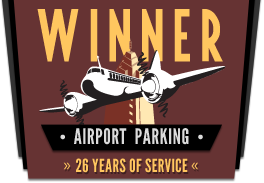If you’ve been planning a trip and are flying to get to your destination, you’ve probably heard about the long security lines at many large airports around the country. The lines have been so bad, that they’ve delayed thousands of passengers and have had many troubled and stressed. Libby Nelson, of Vox, explains more:
“Since March, the nation’s biggest airports have been in the grips of a line apocalypse. Security lines have metastasized. What were once unusually long waits have become routine. Big airports are threatening to kick out the Transportation Security Administration and turn the security process back over to private contractors…
The immediate reason for the long lines is pretty simple: Americans are flying more than ever, and the TSA hasn’t grown quickly enough to keep up. But the current mess is also a direct result of the TSA’s last crisis. Last fall, the agency got in trouble for not doing enough to keep weapons and explosives off planes, and stepped up security as a result.
The TSA has serious problems with culture and management, including disciplining whistleblowers who called out problems. But it’s also stuck between a rock and a hard place, the victim of a political consensus that insists airport security must be perfectly airtight without ever being even the slightest bit inconvenient.
Lines are getting longer partly because more people are flying.
In one sense, the long lines are good news: They’re a sign of economic recovery as more people are flying.
The number of Americans flying dropped precipitously as the recession began, and didn’t recover to its 2007 level until 2014. But over the past year and a half, many more people have been flying: Nearly 900 million people passed through American airports in 2015, up 5 percent from 2014. The number of people the TSA had to screen, since some of those passengers came from foreign airports, increased by 6 percent.
At the same time, airplane tickets have gotten cheaper as oil prices have fallen. The average domestic plane ticket cost $363 last year, down 8 percent from 2014. It was less expensive to fly in 2015 than in any year since 2010.
So far this year, both trends have continued. Overall passenger traffic increased 4 percent in January and 6 percent in February compared with 2014, according to the Bureau of Transportation Statistics. Some of the biggest airports — Denver, Los Angeles, New York’s JFK, and San Francisco — have seen even bigger increases.
Fares, too, are continuing to fall. Hopper, an app that tracks airline ticket prices, is predicting the lowest summer airfares since 2009.
But more people flying also means more people in security lines. And TSA staffing hasn’t kept up. There are 15 percent more people flying than in 2013, and the TSA has 12 percent fewer staff.
Congress isn’t wholly to blame for the budget cuts. The Department of Homeland Security’s own budget request for the 2016 fiscal year proposed cutting 1,666 screeners’ jobs, saying that “risk-based screening practices” — such as getting people signed up for TSA’s PreCheck program, which allows you access to expedited security if you pass a background check and pay $85 — were making checkpoints more efficient. The goal, the department wrote, was to “continue transitioning to a smaller, more skilled, professional workforce.”
The agency now admits that this was a mistake, and is hiring 768 more screeners.
Some airports want to solve the problem by hiring contractors to handle security rather than the TSA, though it’s not clear if that would make much of a difference. Some airports with privatized security still have passengers reporting long lines, including San Francisco International and Rochester, New York…”
To read the rest of the article, click here.
